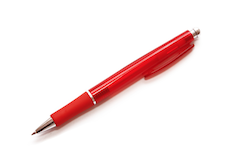Fact-checking is about both the big and the small, the grit of details and the arc of story.
“What checking does is similar to so many other types of editing,” says Yvonne Rolzhausen, head of the fact-checking department at The Atlantic. “Ultimately it’s about the care that you take with a piece.”
Rolzhausen first interned at The Atlantic during her senior year of college and started as a proofreader there in 1993. Early in her career, she had to head to the Boston Public Library to go through microfiche for her work.
“It wasn’t pre-Internet, but it wasn’t too far off,” she said.
We spoke about the work of fact-checkers and lessons the rest of us can learn from them.
1. It’s about the details.
The only way you can look at any piece, whether it’s a paragraph or a 20,000-word story, is in detail — every word, every phrase, every connection.
That takes vigilance, Rolzhausen said.
“You have to just think on sort of a macro and a micro level.”
A good checker looks at every piece, she said, every generalization, “but you need to stand back and sort of see the forest for the trees,” she said. “Do all of these trees, i.e. facts, amount to this forest?”
2. It’s about the big story, too.
“Probably one of the most important things to think about in the larger scheme of things is, on the most basic level, does this piece makes sense? Does the info jibe? Do we have enough to support this?”
When you start lopping off individual trees, or facts, the forest starts to look different, Rolzhausen said, and the overarching theme of the piece may not hold up.
The details have to be right, but just because they aren’t doesn’t mean that the overarching argument the piece makes still is, or the other way around.
3. Now look at the story from every angle.
“What side am I not hearing? Where is the information coming from? Do they have a bias?”
Find the sources at the heart of the story, go to the experts, then the ones who disagree. Read other pieces on this subject so you know what’s out there.
And it’s OK, good even, that you aren’t an expert on that subject.
The best checkers are people who come at whatever that subject is with fresh eyes, Rolzhausen said.
4. Hindsight is easy, especially if the mistakes aren’t yours.
“I go crazy when I see corrections for anything, for any publication, because our mistakes do happen in public,” Rolzhausen said.
No one sees the hours or weeks and the thousand other saves. And mistakes undercut credibility. After a correction, it’s easy to look at a piece and ask, how did this happen?
“It’s very easy, in hindsight, to say they should’ve done these things. It’s not rocket science, but in each instance, there’s the overarching issue of time and time pressures and last minute changes, edits thrown in, privacy issues. There are so many assumptions along the way.”
And sometimes, she said, people get wrapped up in a good story, “and they lose the idea that it’s too good to be true.”
5. It’s all gray.
The facts and the truths fact-checkers deal with aren’t black and white, though they can appear that way.
“The best checking, the most important checking, lies in the world of the gray.”
Corrections: The word micro was misspelled. It has been corrected. Also, Rolzhausen said jibe, not jive. The facts aren’t that funky.








Comments